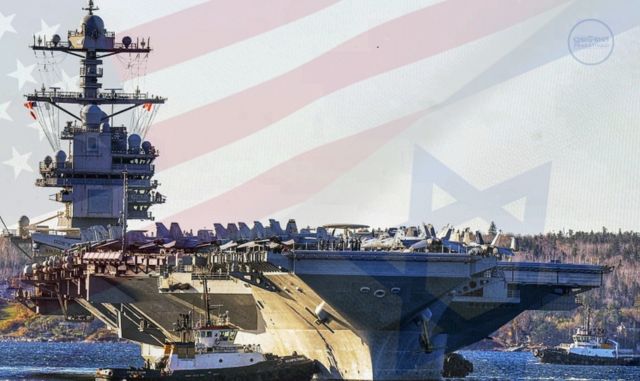Washington: Within hours of the horrifying attacks by Hamas, the US began moving warships and aircraft to the region to establish a force presence that deters Hezbollah, Iran, or others from taking advantage of the situation.
Special operations personnel support Israel’s military with planning and intelligence while dozens of aircraft fly to American military bases throughout the Middle East.
The escalation reflects America’s concern that the deadly war between Israel and Hamas would become a more dangerous regional conflict.
Those ships and warplanes’ primary mission was to provide Israel with whatever it needed to respond.
But the US is capable of more than that.
How The Pentagon Boosts Israel:

SPECIAL OPERATIONS FORCES
Israel is receiving some personnel and desperately needed munitions from the United States. Assisting Israel with intelligence preparation, guidance, and consultations with the Israeli Defense Forces on hostage retrieval operations is a tiny US special operations cell.
Those forces have not been responsible for rescuing hostages, which will put them on the ground.
WEAPONS
The United States also orders American defense firms to fulfill weapons purchases for Israel already on file. One of the most important of these is ammunition for Israel’s Iron Dome air defense system, which hunts down rockets heading toward its cities.
Israel has ten such systems in place. Beginning with Saturday’s attack, more than 5,000 rockets from Hamas have been fired toward Israel, with the majority being intercepted by the system.
The Iron Dome munitions the US provides to Israel will likely exceed what Israel has ordered and will be part of ongoing military assistance packages.
Small-diameter bombs and JDAM kits will also be included in those packages; the latter is a navigation and tail fin kit that transforms a “dumb” bomb into a “smart” bomb and allows soldiers to direct the munition to a target rather than just dropping it.
NAVY SHIPS AND PLANES
The Pentagon redirected the Gerald R. Ford carrier strikes group to quickly sail to the Eastern Mediterranean after completing an exercise with the Italian Navy when the ship with its crew of about 5,000.
The carrier offers a wide range of choices. It can carry out information warfare and is a significant command and control operations center. It can launch and land E2-Hawkeye observation aircraft, which can be identified by its 24-foot (7-meter) diameter disc-shaped radar. The planes regulate the airspace, conduct surveillance, and provide early warnings of missile launches while spotting opposing aircraft and guiding American maneuvers.
The Ford carries f-18 fighter jets that can fly intercepts or make direct hits. The ship’s humanitarian skills are also powerful, and they include an onboard hospital with an ICU, an emergency room, and roughly 40 medical professionals in total. It is equipped with helicopters that can be used to evacuate victims or life-saving supplies.
With the potential to double the Navy’s reaction to Israel, the USS Dwight D. Eisenhower carrier strike group will depart from its homeport of Norfolk, Virginia, and head for the Mediterranean.
The Ford was nearing the conclusion of its deployment, while the Eisenhower had already been planned to deploy to the Mediterranean on a regular rotation. On Wednesday, White House spokesperson John Kirby indicated that the Biden administration might keep both strike groups in place.
AIR FORCE WARPLANES
Additionally, the Pentagon has ordered more aircraft to boost the A-10, F-15, and F-16 squadrons at sites across the Middle East. If necessary, more will be added.
The U.S. Air Force already has a sizable air force in the area to conduct both human and uncrewed operations, most notably in Syria, where an Air Force F-16 was instructed last week to shoot down a Turkish drone endangering American ground personnel.
Since the strikes, Air Force C-17s have arrived in Israel and left the country. When the attacks started, the transport planes were picking up American service members in the area for a military drill that hadn’t started yet.
Regarding potential future missions that American airpower might undertake in response to the crisis, neither the Air Force nor Central Command would say.







